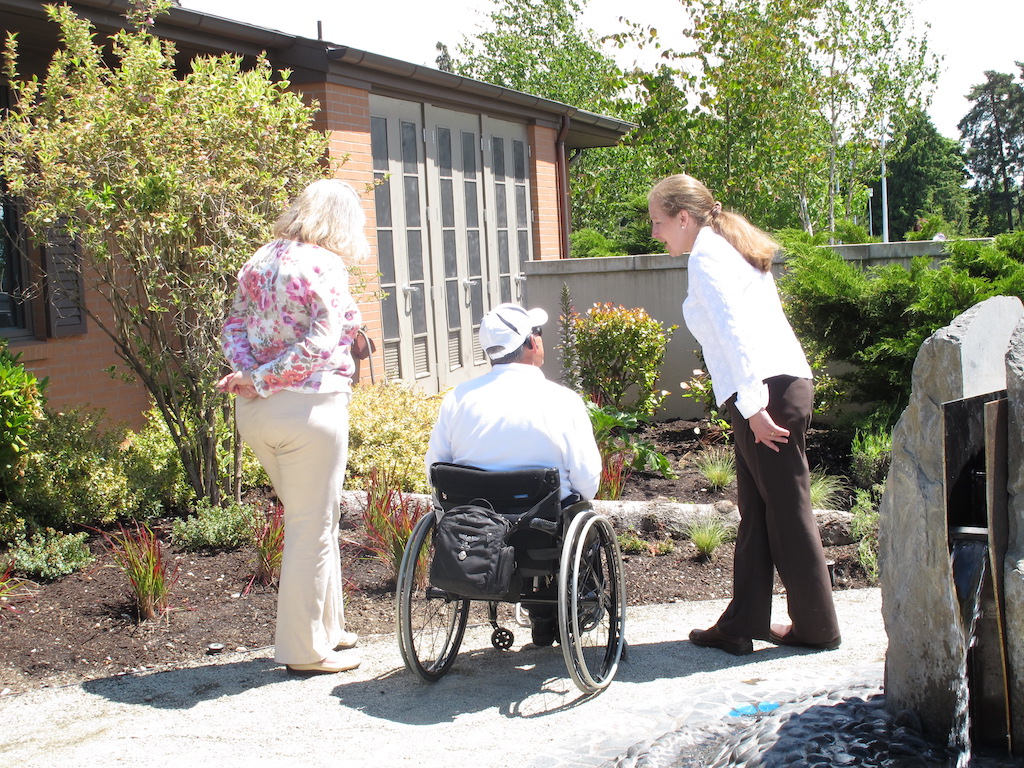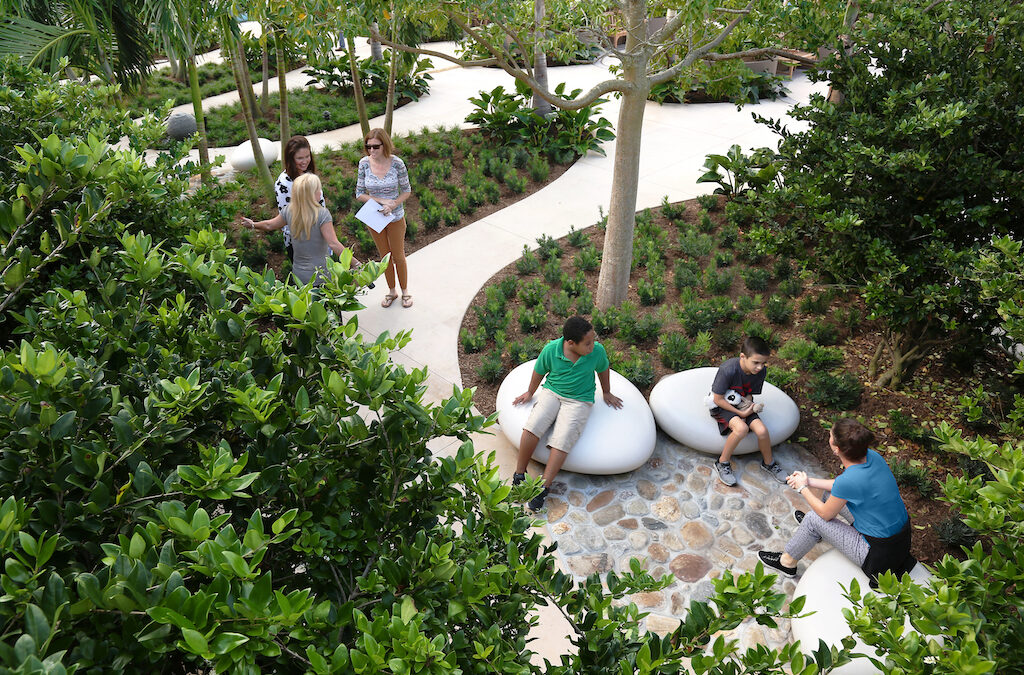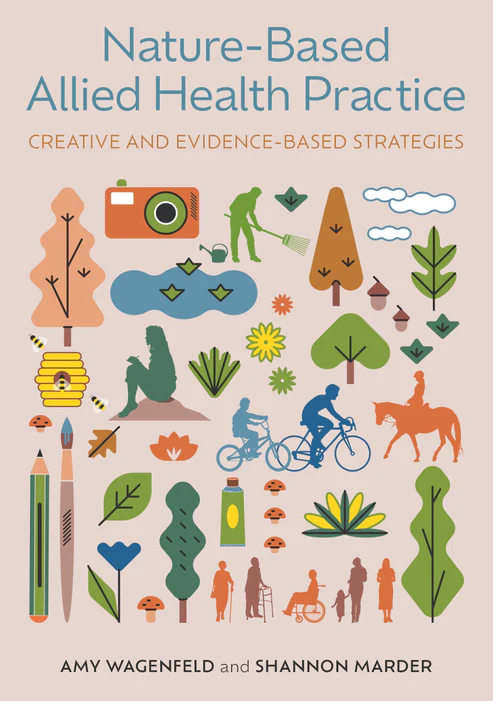According to Mattessich and Monsey, interprofessional collaboration is a “a mutually beneficial and well-defined relationship entered into by 2 or more organizations to achieve common goals” (1992, p. 7). For many in allied healthcare, interprofessional collaboration means developing and carrying out treatment plans in coordination with not only the patient/client but also with other healthcare providers like occupational therapy and physiotherapy, speech and language therapy and physiotherapy, and so on. For the sake of those we serve, we need more of these kinds of interprofessional collaborative relationships within healthcare to work well.
I’d like to extend an invitation to take the concept of interprofessional collaboration further beyond the walls of healthcare and into the environments in which we live our lives, specifically outdoor spaces. We know now that the benefits of experiencing nature improve physical and mental health, they improve social-emotional skills, and they also help us to learn. As allied health practitioners our goals and objectives most always address at least one of these areas of health.
While we can and do successfully engage clients in nature-based therapeutic interventions, what would the environments in which we work with clients look like if we, the experts in health and wellbeing, crossed a proverbial bridge to professionally collaborative with landscape designers? Interprofessional collaboration can embody a shared minds approach to design. It provides a foundation to blend the skills and ideas of varied disciplines, including healthcare professions. Coming from different professional backgrounds, each with diverse sets of terminology and scales of measure, shared knowledge is not readily apparent but worth exploration and for those looking for a novel way to practice, to implement.
As an occupational therapist who has the honor of teaching in a landscape architecture program as well as maintaining a therapeutic design consultancy in which I work as part of collaborative interprofessional design teams, I can assure you that never have I felt my skills as an occupational therapist have had a greater impact. Being an integral part of creating outdoor spaces that have transformed the lives of older adults, veterans, individuals with autism, and young children experiencing trauma is incredible.

Amy Wagenfeld (PhD, OTR/L, SCEM, FAOTA)
Affiliate Associate Professor Department of Landscape Architecture University of Washington, Seattle, WA, USA and Principal of Amy Wagenfeld | Design
Amy is an occupational therapist, therapeutic and universal designer, educator, researcher, and author. She recently co-authored two books, Nature-Based Allied Health Practice and The Nature of Inclusive Play. When not teaching, writing, and designing, Amy loves nothing more than hiking in the magnificent Pacific Northwest and the front range of the Rocky Mountains.

Photo credit: Amy Wagenfeld
When I teach design students about the importance of the sensory systems in daily life and how through design they can be enriched or compromised, and how trauma responsive design is extraordinarily complex and involves more than thinking about color palettes is an invaluable part of their education. For many students being exposed to a different design perspective (through the lens of occupational therapy) becomes a foundation for their future work as practitioners. Getting feedback such as, “your occupational therapy voice translated into design has transformed the way I work and think” is deeply gratifying. It gives credence to the idea that interprofessional collaboration between seemingly disparate professions is not so far fetched as one might think.
If this idea of bridging allied health with design is of interest, how can you take your skills as a physiotherapist (or other allied healthcare discipline) and your passion for nature into the realm of design? Here are a just a few suggestions.
- Learn everything you can about therapeutic landscape design. This involves lots of reading!
- Figure out who the landscape designers engaged in therapeutic design are in your part of the world and as you feel ready, reach out to them to inquire about the possibility of connecting. Before reaching out have a clear plan of what you as a therapist feel you can bring to the ‘design table’ that is unique and would enhance the work the designer/s are already doing.
- Attend landscape design conferences.
- Get involved with community design projects – respond to calls for community member input. Doing this gets your name out and known.
There are ample reasons and if you are persistent, opportunities to integrate into a collaborative interprofessional design team that embraces diverse experiences and interests. As allied healthcare professionals we have the skills, training, and the passion to positively influence the outdoor environments we inhabit. If our end goal is to help our clients return to or remain in their homes, to stay connected with their communities, or in some cases to integrate into new communities, we need to extend our thinking about interprofessional collaboration from within our general healthcare bubble into the magnificent world of design. The time is now.
Wagenfeld, A., & Marder, S. (2023). Nature-Based Allied Health Practice: Creative and Evidence-Based Strategies. Jessica Kingsley Publishers. https://uk.jkp.com/products/naturebased-allied-health-practice
Mattessich, P. W., & Monsey, B. R. (1992). Collaboration: what makes it work. A review of research literature on factors influencing successful collaboration. Amherst H. Wilder Foundation, 919 Lafond, St. Paul, MN 55104.
Header image by: Dirtworks, PC



I am relatively new to the concept of environmental physiotherapy and as a big fan of nature, I find it simply brilliant that a field has merged ‘clinical’ practice and our natural environment. I also find the tips on how to collaborate with landscapers to be most useful, although it seems we should have been doing so ages ago…who better than we, the professionals involved in improving body function? Our patients do not (and should not) permanently stay in the clinics or inside their homes…the natural environment surrounds both!
Thank you, Adjoa. I hope you “take it outside” with patients you work with and perhaps dip into therapeutic design!
Amy